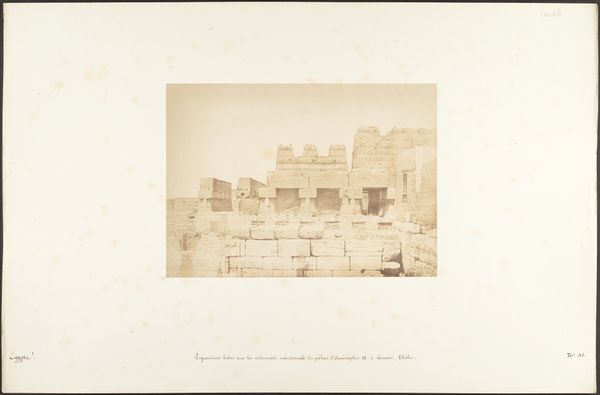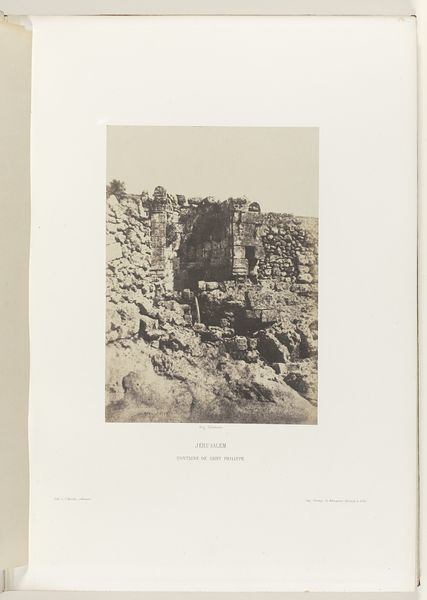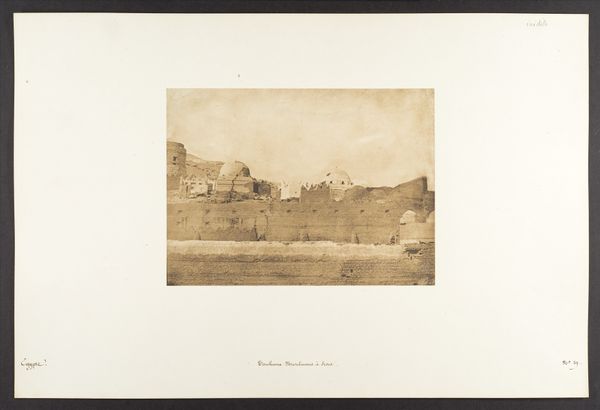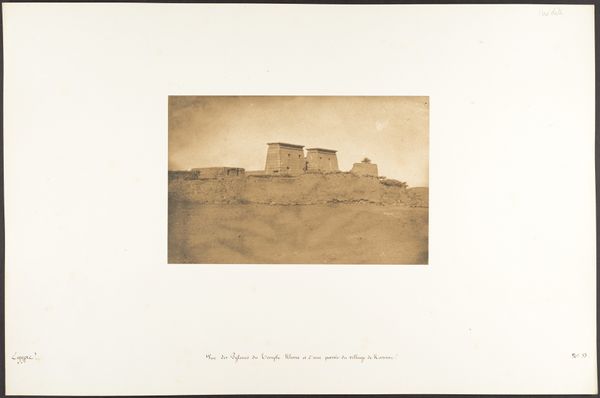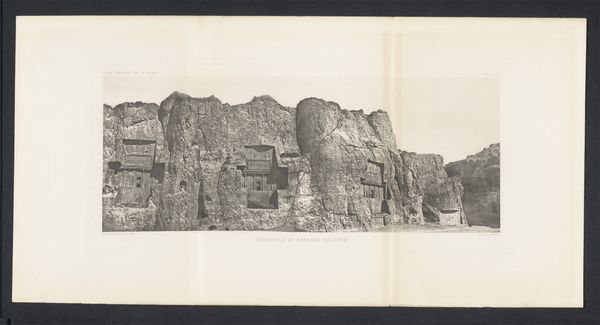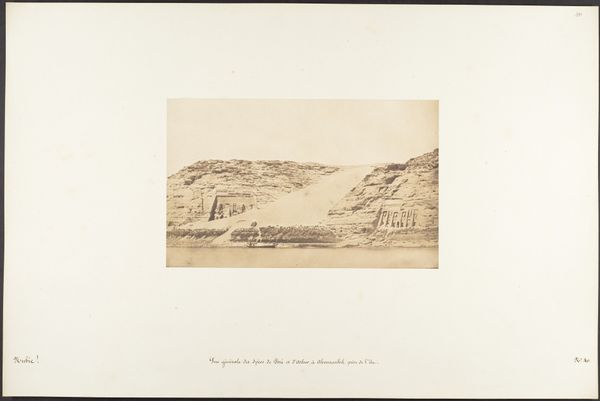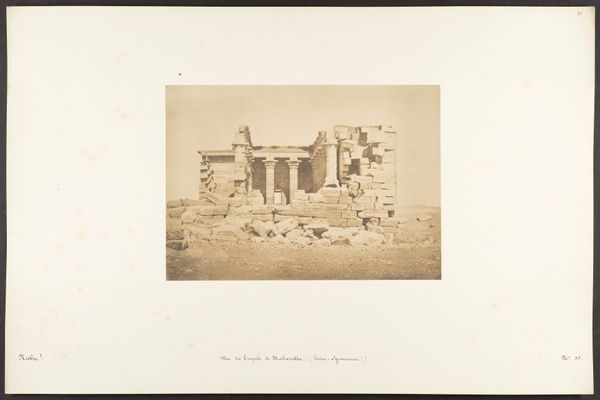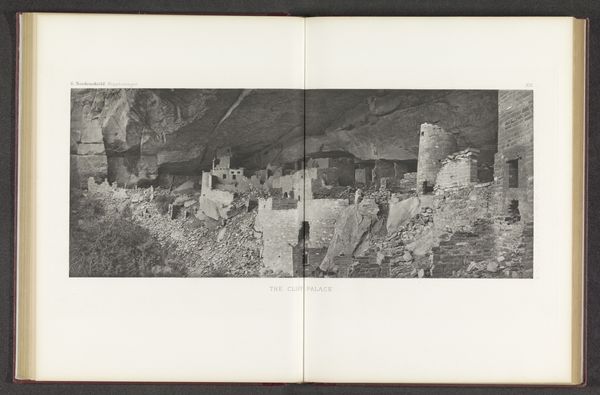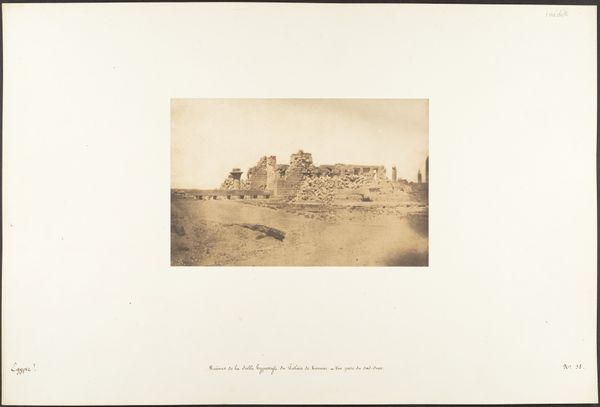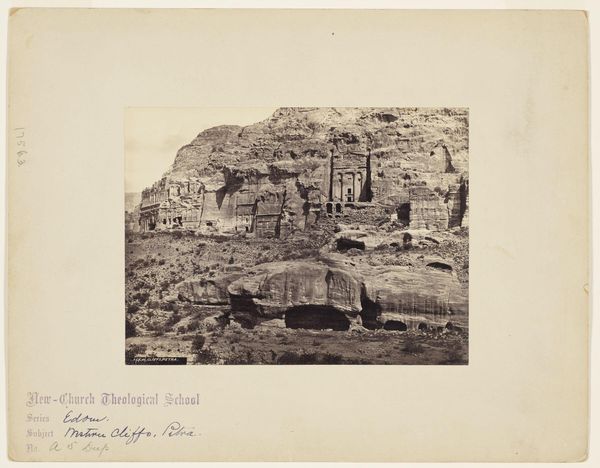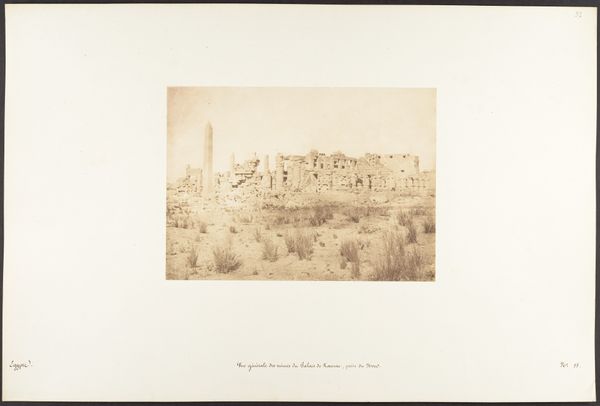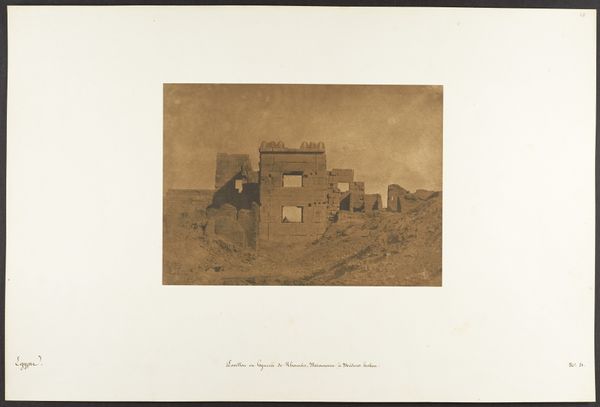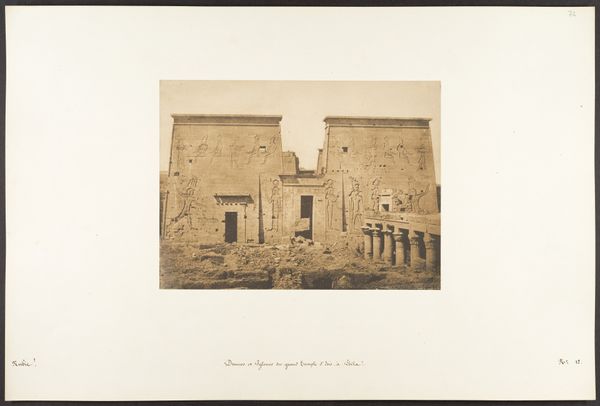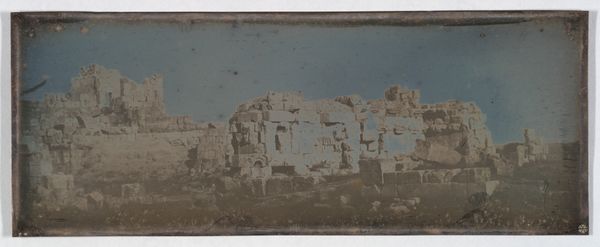
Vue de la Salle Hypostyle du palais de Karnac, prise sur l'angle N.E. 1849 - 1850
0:00
0:00
photography, gelatin-silver-print, architecture
#
pale palette
#
landscape
#
photography
#
ancient-mediterranean
#
arch
#
gelatin-silver-print
#
architecture
Dimensions: Image: 6 1/8 × 8 1/4 in. (15.5 × 21 cm) Mount: 12 5/16 × 18 11/16 in. (31.2 × 47.5 cm)
Copyright: Public Domain
Editor: We’re looking at Maxime Du Camp’s “Vue de la Salle Hypostyle du palais de Karnac, prise sur l'angle N.E.”, a gelatin silver print from around 1850, currently held at the Metropolitan Museum of Art. I'm struck by the monochromatic palette and the sheer monumentality captured within the photograph. How do you interpret this work? Curator: I am drawn to the arrangement of forms. Consider the pillars. Their eroded surfaces speak not of decay, but of a transition in the surface itself. How might the photographer employ the interplay of light and shadow to further explore these structural qualities? Note also that the use of a muted color range does little to detract from the textures created by both natural forces as well as by the hand of humanity. Editor: That's interesting, because I initially felt like the monochrome look flattened the texture, and was distracting from it. Curator: I disagree. The tones provide a unifying element that allows us to perceive the composition as an organized system rather than just an unstructured whole. Do you think a full colour palette would enrich the image, or complicate its internal relationships? Editor: That’s a really helpful way of seeing it. Perhaps the limitations of early photography really pushed artists to think about form and light in a very deliberate way. I now understand how the texture becomes even more prominent in the monochrome setting. Curator: Indeed. Early photographs like this are often valued more for the qualities they possess as artifacts rather than records of specific places or cultures. We can gain unique insights through analyzing such intrinsic qualities. Editor: Thanks. I’ll certainly consider that in the future, appreciating a piece more for how the subject interacts with light rather than as the subject on its own.
Comments
No comments
Be the first to comment and join the conversation on the ultimate creative platform.
